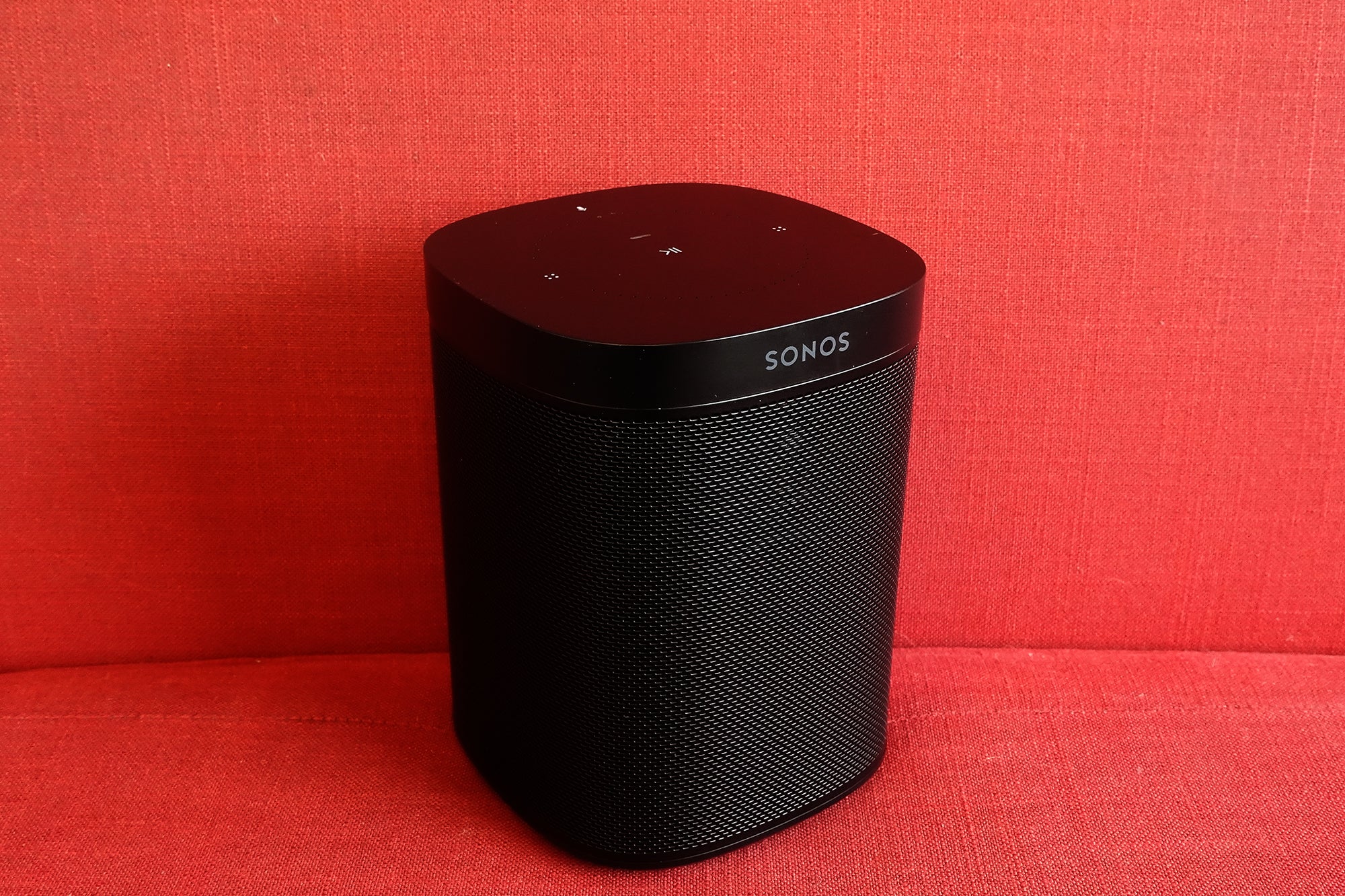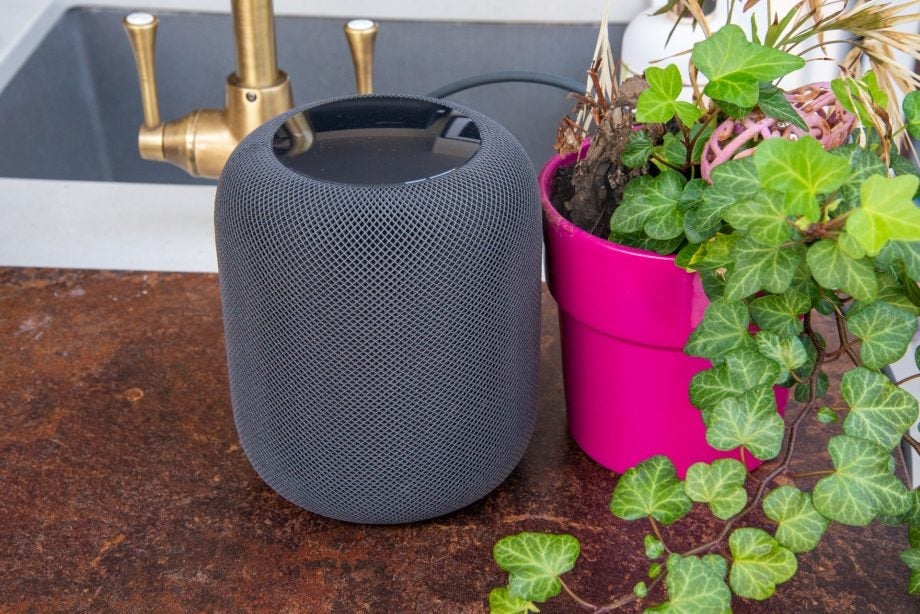Amazon Echo Studio Review
An entertaining speaker with bags of bass and Dolby Atmos 3D audio
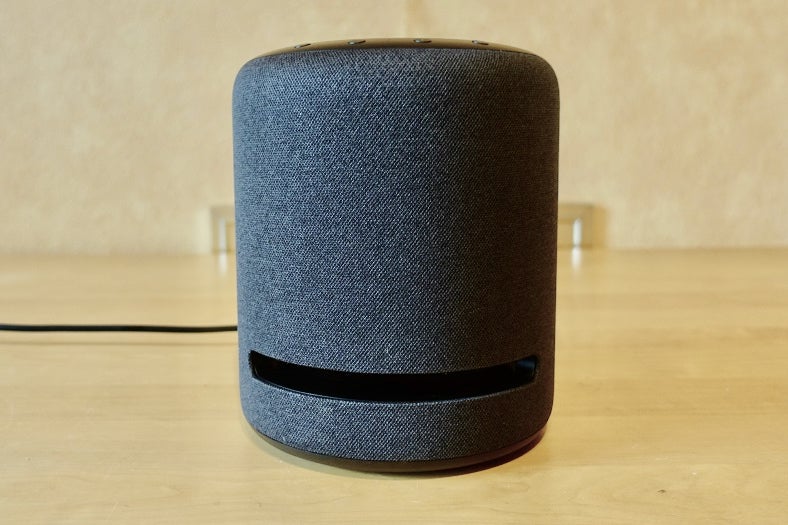

Verdict
If you’re after a smart speaker that delivers fidelity and nuance, there are better speakers than the Echo Studio. If you want to have a rollicking good time and experience 3D audio, and aren’t afraid of some thumping bass, then step right up.
Pros
- Weighty bass and big sound
- Alexa is terrific
- Dolby Atmos 3D
- Synergy with other Echo/Fire TV products
- Good value for the price
Cons
- Not as nuanced in the midrange or treble
- Bass can be overpowering
- Weighs a tonne
Key Specifications
- Review Price: £189.99
- Alexa voice control
- Weight: 3.5kg
- Dolby Atmos 3D/Sony Reality Audio
- 5.25-inch downward-firing woofer
The Echo Studio is Amazon’s gambit to bring high-quality music to the masses at a more affordable price, packing in Dolby Atmos 3D, hi-res audio and Alexa Skills.
When it comes to audio quality, the history of Amazon’s Echo range is one of fairly average sound. With each generation – particularly the Echo Plus line – sound quality has evolved to the point where the 3rd-gen Echo Plus is a respectable-sounding speaker.
The Echo Studio, however, is more than double the price of the £89 Echo Plus and represents a different calibre of speaker. It’s with the Echo Studio that Amazon hopes to deliver a speaker that can hold a candle to more marque audio brands. Amazon’s most ambitious effort to date, the Echo Studio features Dolby Atmos 3D sound and, at £190, is cheaper than the Sonos One.
As far as the Echo range is concerned, the Echo Studio is its hero product, ready to take on more established brands. The question is, has Amazon managed to deliver not just a great smart speaker, but also one with great sound?
Price and Availability
The Echo Studio went on sale in 2019 for the price of £190/$199/€200/CAD$199/AUD$329
Design
- Heavy
- Mic-off button for privacy
- Alexa ring interface
Let’s not beat about the bush. The Echo Studio is built like a tank and weighs about as much.
At 206mm tall and 175mm wide, it has a bigger footprint than the Apple HomePod and weighs 1kg more at 3.5kg.
Its looks are spartan, echoing Amazon’s aesthetic across its smart speakers. The coarse, scratch-resistant fabric (in grey and black finishes) that wraps around its circular body is more functional than stylish, presumably to ensure the Echo Studio fades into the background rather than draws attention to itself.
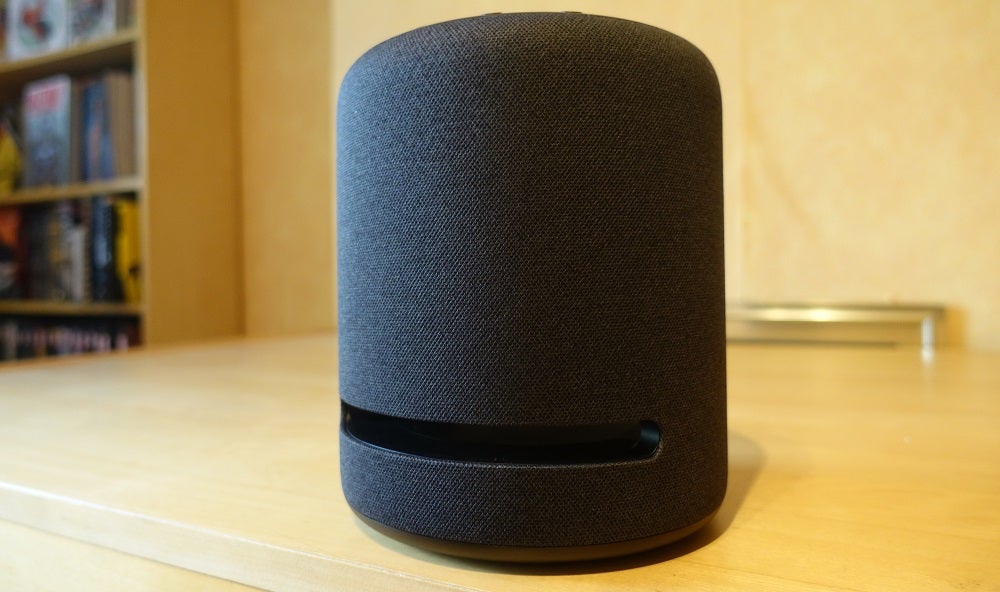
There are apertures to maximise low-end performance towards the base of the speaker and on both the front and back, making the Echo Studio look like the Mark I Iron Man suit sans eyeholes. Peek through at the right angle and you’ll be able to see the woofer vibrating.
On top are four buttons, to turn the microphone off (and keep Alexa from listening), volume up and volume down, as well as what Amazon calls the Action button for quick access to Alexa. The top surface is a magnet for fingerprints if you’re not careful.
And there’s the ubiquitous Alexa ring that lights up whenever you say her name. It flashes white when you tweak the volume and emits an amber glow when the microphone is turned off, among many other colour indicators.
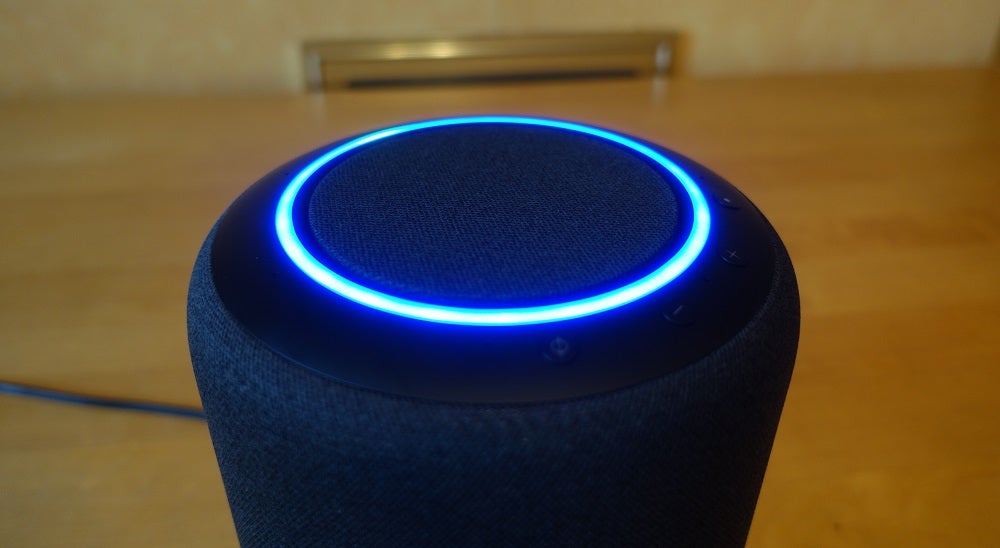
Inside its generous proportions is the 5.25-inch woofer, accompanied by a duo of two-inch midrange drivers that fire left and right, a one-inch forward-firing tweeter and a two-inch upward-firing midrange unit that deliver a whopping combined 330W of power. That’s 30W more than the Naim Mu-so Qb 2nd Generation. There’s space left for a 24-bit DAC and power amp that enables 100kHz of bandwidth for the streaming of hi-res audio files.
Around the back are connections for power, a 3.5mm/mini-optical line-in hybrid for CD or MP3 players and what looks like a USB-C connection that’s presumably for service updates.
As it’s mains powered and the mains cable itself is short, placement can be tricky. The Echo Studio won’t be placed dead centre in a room unless there’s an extension cable or a longer figure-of-eight cable at hand.
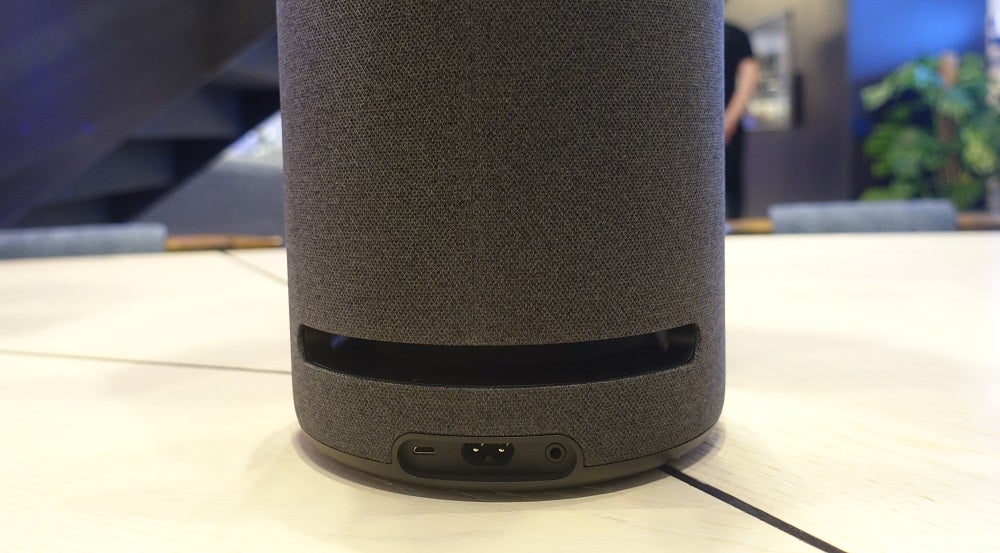
Set-up and App
- Alexa voice control
- Needs Amazon Alexa app for set-up
- Needs space to operate
To set up the Echo Studio, download the Amazon Alexa app (iOS, Fire OS and Android) and it will swiftly go through the process of setting up over Wi-Fi.
On the app, you can enable Alexa Skills; form groups of Amazon devices; listen to Audible or Kindle books; and link music streaming services such as Apple Music, Deezer and Spotify to Alexa, along with much, much more.
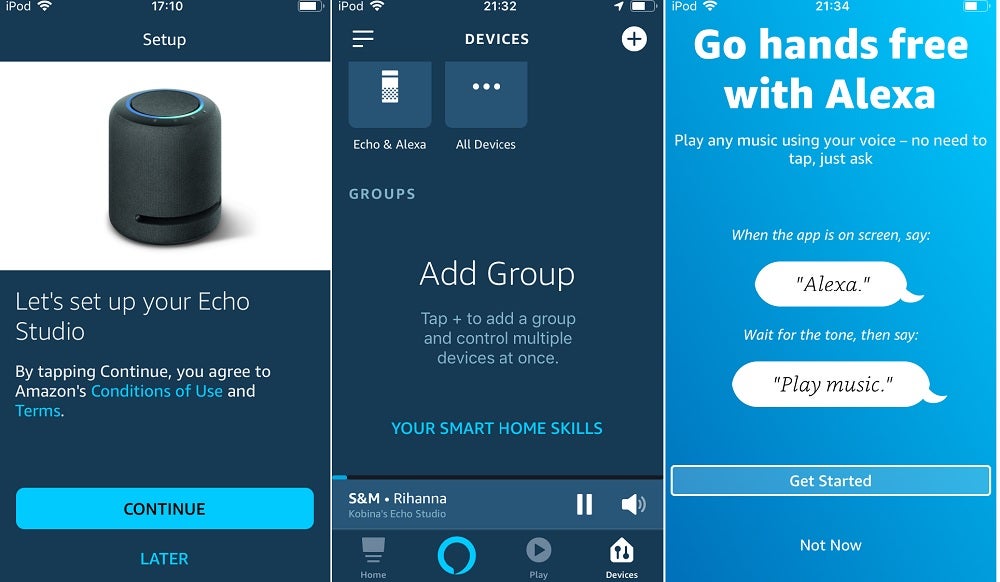
Clicking on the music streaming apps offloads you to the native app. For Spotify, Alexa can only be operated through a Premium account.
And in terms of placement, the Echo Studio needs space to operate. For prime performance, have it at listening height, at least 15cm from a wall and with space above and around it, which rules out bookshelves or enclosed spaces. Plonk it on a hard surface to provide a secure footing for its shuddering bass sound.
Features
- High-res audio support
- Can be paired with Fire TV devices
- Auto calibration
Similar to Auto Trueplay on the Sonos Move, the Echo Studio automatically calibrates to measure the acoustic properties of a room. It’ll do this as soon as you turn it on (the light ring glows blue for about 30 seconds), and it shouldn’t be moved during this process.
Alexa’s Skills are too numerous to count and too exhaustive to list. For those unfamiliar, Alexa is capable of everything from checking the local weather to managing the lights and central heating – Zigbee is built-in for compatible smart home devices – to playing your favourite playlist from your music service of choice. Alexa can’t cook your dinner, but it can order it and have it delivered if you like.
File support is broad with FLAC, MP3, AAC, Opus, Vorbis, Dolby Digital, Dolby Digital Plus, Dolby Atmos, Sony 360 Reality Audio/MPEG-H all supported.
With Sony 360 Reality Audio, Sony’s tech works best with its own headphones, with the optimisation not extending to wireless speakers.
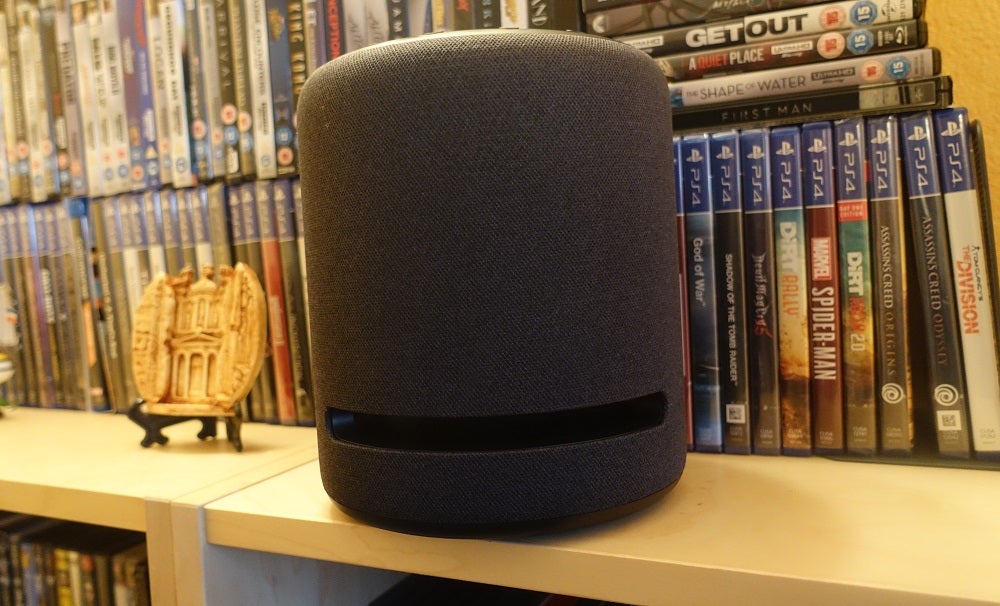
The Echo Studio can – in theory – play tracks up to 24-bit/44.1kHz, and you can access CD quality (16-bit) and hi-res (24-bit), along with a selection of 3D audio tracks through Amazon’s Music HD lossless music streaming service.
On Music HD (£12.99 for Prime subscribers), tracks labelled CD quality are referred to as HD and hi-res as Ultra HD. To see what bitrate a track is playing at, tap the tag where it says HD or Ultra HD. Curiously, while the Echo Studio is capable of 24-bit/44.1kHz, it streams music at 16-bit/44.1kHz.
If that’s to save on bandwidth, I’m not sure that’s necessary. If, as the app says, playback depends on room conditions, network and speaker performance, why does quality need to be throttled down if all these angles are covered? It’s a peculiar decision if so.
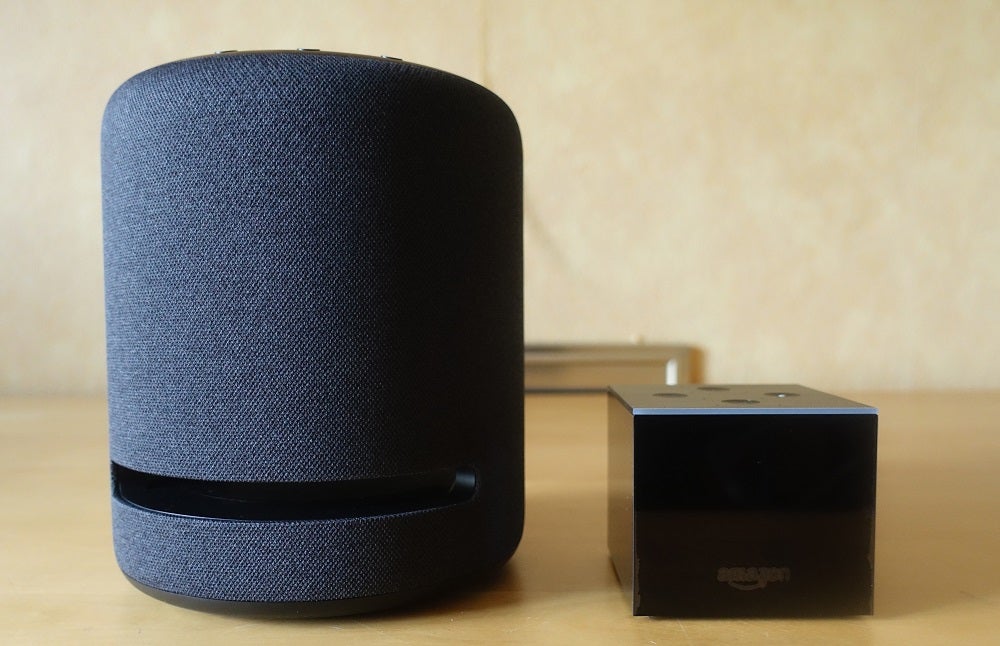
Purchase a pair and they can be used as a left and right in stereo set-up. Add an Echo Sub to make a 2.1 system for ridiculous levels of bass. And to keep all that synergy flowing, the Echo Studio can wirelessly connect to either a Fire TV Cube (2nd gen) or Fire TV Stick 4K.
It’s best to cast to the Echo Studio from either the Amazon Music HD app or through Spotify Connect as volume is noticeably lower via Bluetooth. If it gets too loud or isn’t loud enough, the system volume can be set in the Alexa app.
Bluetooth is supported, but we haven’t been able to pin down which version.
Audio Quality
- Big bass performance
- Lacks a little subtlety
- Good Dolby Atmos performance
Performance is where the Echo Studio gets very interesting. In the time I spent with it, I’ve hummed and hawed over its qualities. Suffice to say it’s good. It is the best-sounding Echo speaker by some distance, but not the best-sounding speaker in its price bracket.
Right from the off, the Echo Studio produces a resonant, floor-shaking performance with almost any track you feed it. The woofer gives it a firmer, stronger and weightier sound than most speakers at this price, but that’s not always a welcome aspect.
Compared to the Audio Pro A10, which costs a fraction less at £180, midrange and treble aren’t as accommodating. A play of Nirvana’s Where Did You Sleep Last Night? and the Echo Studio gives more weight to it – it’s a beefier, fuller sound – but the midrange, especially with Kurt Cobain’s voice, feels diminished and further back in the soundfield rather than projecting out as the A10 does. Cobain’s voice is clear throughout, but the immediacy of his voice isn’t as strongly felt.
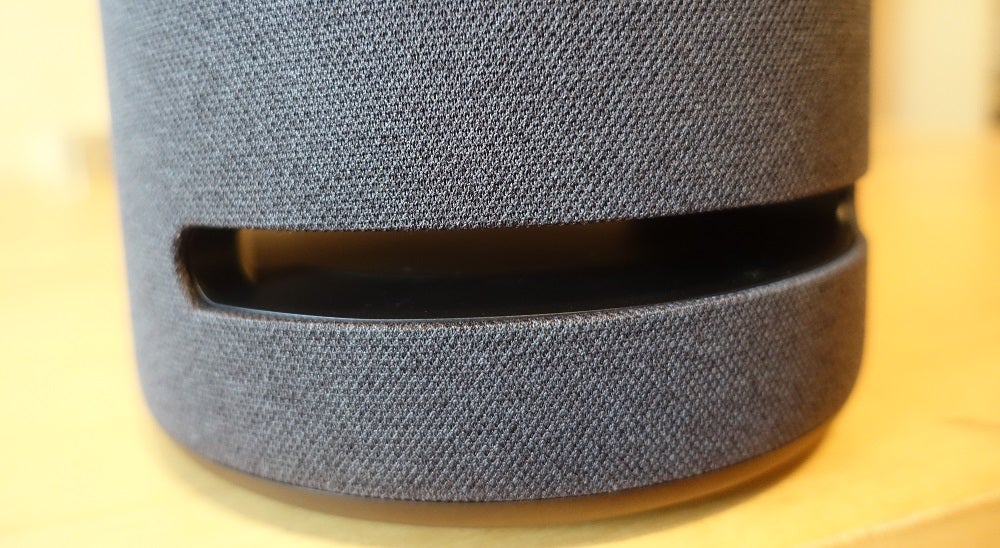
The Echo Studio also responds favourably to Forge from the Avengers: Infinity War soundtrack – a test favourite. Dynamically it works fairly well, and treble reproduction in the brass instruments is entertaining, with the woofer adding power and drama in the track’s last minute.
A switch to Laurie Anderson’s Born, Never Asked on Spotify and the treble isn’t as sweet as the Audio Pro with it not able to match the A10’s highs, although the bass is more pronounced.
As for Soundgarden’s Black Hole Sun (in Ultra HD), Chris Cornell’s voice is impactful but, again, so is the bass. It’s nevertheless an enjoyable performance, though it highlights the need for cleaner separation between bass and the midrange for more clarity and nuance, which becomes evident in some of the busier tracks I listen to.
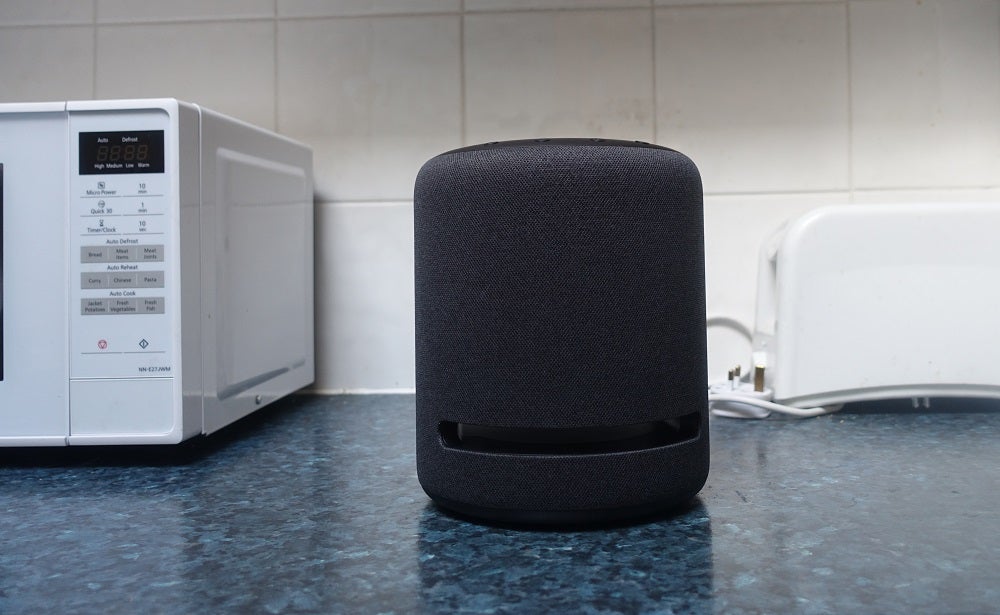
Despite that, it delivered a big, spacious sound that filled the room despite only being at 40% volume. Bass can feel overpowering, dominating tracks as its energy rumbles through the table and floor for good measure. At least there was no sense of distortion overall, but I can only imagine the bass becoming stronger the more you dial the volume up.
Moving on to 3D and there are positives and negatives. The major positive is that it does work. The negatives are that it depends on how well the track has been remastered in the format and there isn’t much available in the format.
So while it is Dolby Atmos in name, it’s not necessarily the same as Atmos for TVs or soundbars or speaker packages. The idea of the Echo Studio placing sounds specifically around the room is wide of the mark, but as a means of getting better sound, it genuinely works.
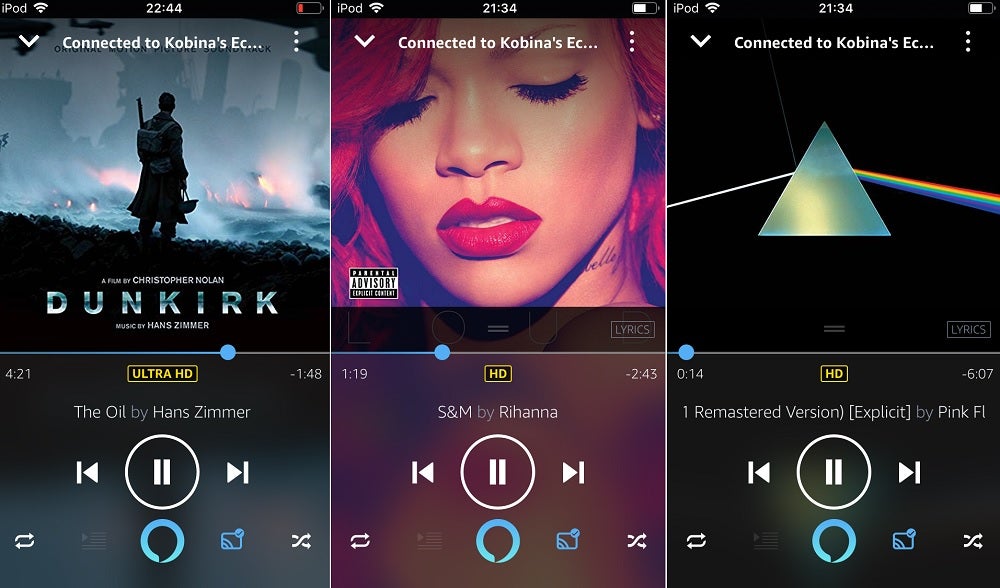
Anne-Sophie Mutter’s cover of John Williams’s Rey’s Theme from The Force Awakens is rendered big, bold and spacious, but it’s one of those tracks where the 3D isn’t as evident as you might hope. But it still sounds good and more confident than in either HD or Ultra HD.
In all the tracks I tried, height was lacking. However, in terms of left and right, The Jackson 5’s I Want You Back and Pink Floyd’s Money made a positive impression.
The effect is fleeting and only really pronounced at the beginning of each track (the cash registers in Money were particularly expressive), highlighting the fact that its impact depends on how music was adapted for 3D.
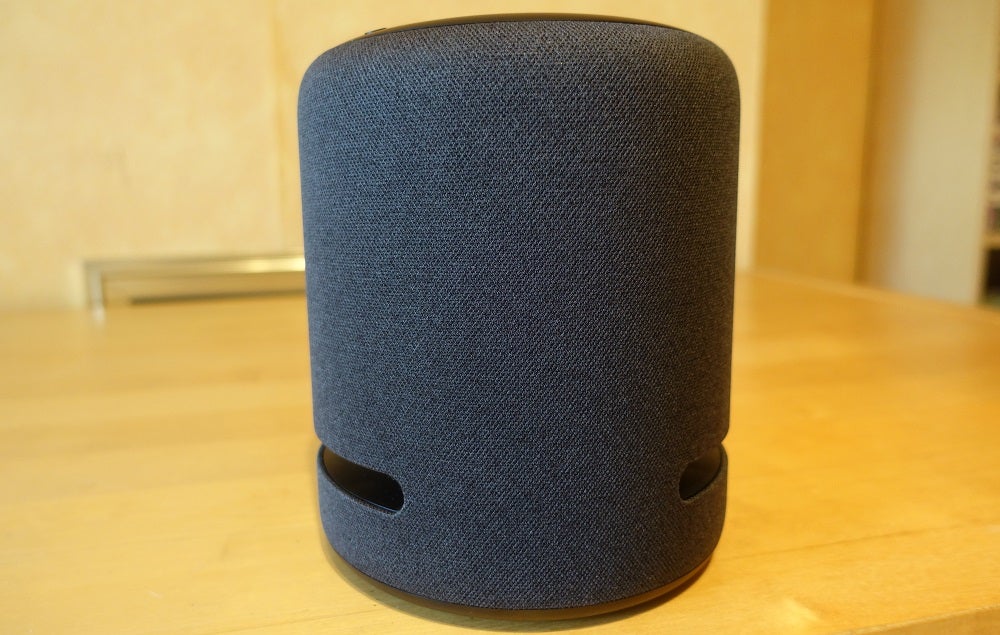
Not every song is going to be a cinch for Dolby Atmos 3D, but when it works it grabs your attention immediately. Considering the speaker’s configuration, 3D music sounds as if it’s more in the Echo Studio’s wheelhouse and if the format does explode, the Echo Studio is in the prime position to take advantage.
That said, I think the Echo Studio is caught between two camps. It wants to be great for both music and TV, but the strength of its bass ends up delivering a sound that’s less than balanced.
If nothing else it’s a speaker with a bold presence, making it a great for parties. The thumping bass of Rihanna’s S&M nearly shook the floorboards. The Echo Studio is easily the best and biggest-sounding Echo speaker thus far.
You should buy it if…
-
You’re in the Amazon ecosystem
If you’ve bought into the Amazon ecosystem, the Echo Studio is something of a no-brainer, with Alexa ensuring a slick user experience. For Prime Video users/Fire TV owner it offers plenty of added value.
-
You want lots of features
While the Echo Studio isn’t not the best-sounding speaker we’ve listened to at this, it has features no other speaker at that price can match. The Dolby Atmos 3D works, although it does require tracks that take advantage of it.
-
You like bass
The Echo Studio piles on the bass, at the cost some refinement it should be added. But if you like you music and TV with some added punch, the Studio provides plenty of power.
You shouldn’t buy it if…
-
You want a more hi-fi sound
The Audio Pro A10 is cheaper and, while bass is much slighter, the treble and midrange are smoother, clearer and more dynamic. It supports Alexa, but not to the same extent as the Echo Studio.
-
You want a speaker that takes up less space
There’s also the Sonos One, which is smaller, more convenient and carries support for the major voice assistants, music streaming services and AirPlay 2, opening up a wealth of options.
FAQs
The Amazon Echo Studio is small enough to carry around, but needs to be plugged into the mains and connected to Wi-Fi in order to function, so it’s not portable.
The Amazon Echo Studio needs to be plugged into the mains to function, and is therefore not wireless.
The Amazon Echo Studio is not waterproof.
Specs
Jargon buster
Tweeter
A tweeter is a type of loudspeaker driver that’s designed to reproduce high frequency (treble) sounds.
Woofer
A woofer is a type of loudspeaker driver designed to reproduce low frequency (bass) sounds
Multiroom audio
Multi-room refers to the act of grouping wireless audio systems together to play/control music throughout a home. For example, Multi-room systems can allow for the same piece of music to be played on all connected systems, or different music played on each individual speaker.
Dolby Atmos
Dolby Atmos is an object-based audio format. It expands on 5.1 and 7.1 soundtracks by adding overhead channels. Sounds are referred to as “audio objects”, of which there can be up to 128 audio channels, and these ‘objects’ can be accurately positioned within a 3D soundscape. This allows soundtracks that support the technology to place sounds above and around the listener with compatible kit.
Smart Speaker
A smart speaker differs from a standard wireless speaker by being able to connect to the internet, communicate with other devices on the same network and stream content over a Wi-Fi connection. Smart speakers can often be controlled via spoken commands through digital assistants such as Amazon Alexa, Google Assistant or Apple Siri.
Bluetooth
Bluetooth is a method of wireless transmission that allows for the exchange of data between devices over short distances.
Hi-Res Audio
Hi-Res audio is referred to as a standard as well as a marketing term that describes digital audio files of better-than-CD quality (16-bit/44.1kHz).

